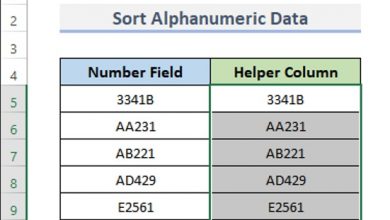Grounded theory Background Characteristics Data analysis Methodology
Grounded theory is a research method that deals with the generation of theory that is grounded in data that has been systematically collected and analyzed. It is used to discover things like social relationships and group behaviors, known as social processes. It was developed in California, USA, by Glaser and Strauss during their study “The Consciousness of Dying”. It is a general methodology for developing a theory that is based on data that is systematically collected and analyzed.
Grounded theory offers researchers a method that complements various forms of qualitative data collection and will speed up their work. Adopting more grounded theory strategies will allow researchers to broaden the theoretical scope of their studies and make tacit meanings and processes explicit. Constructivists have not only rethought grounded theory, they have also revised it so that the method is more flexible and widely adoptable than its earlier versions.
Background of the Grounded Theory
In the past, grounded theory was often considered separate from other methods. Now, the constructivist version makes more evident the usefulness of combining grounded theory with other approaches. Grounded theory can make ethnography more analytical, interview research deeper, and content analysis more specific (Dey, 1980).
Several computer-aided qualitative data analysis programs are based on grounded theory, and this method can add innovation to mixed-methods research. Grounded theory emphasizes focusing data collection and testing and developing analytical insights. Therefore, grounded theory offers the tools to build strong evidence within the analysis and to explain the processes.
Grounded Theory Characteristics
Consistent with pragmatic influences on Grounded Theory methodology, Strauss (1987) characterizes the scientific method as a sequence of induction, deduction, and induction: Grounded theories arise inductively from data, predictions from evidence they are then deduced from the theories, and finally the theories are inductively confirmed or disconfirmed. thus, it has the following characteristics:
Data collection and analysis occur simultaneously.
Categories and analytical codes are developed from the data. Preexisting conceptualizations are not used, which is known as theoretical sensitivity.
Theoretical sampling is used to refine the categories.
Inductively constructed abstract categories.
Social processes discovered in the data.
Use of analytical memos between coding and writing.
Categories integrated in a theoretical framework.
Data analysis in Grounded Theory
open coding
This is a line-by-line coding in which key concepts and phrases are identified and highlighted, and moved into subcategories and then into categories. This breaks the data down into conceptual components and the researcher can begin to theorize or reflect on what he is reading and understanding, making sense of the data. Each participant’s data is “constantly compared” for similarities.
axis coding
In this phase, the relationships between the categories and the connections are identified.
Selective coding: consists of identifying the main category and methodically relating it to other categories. Relationships must be authenticated and categories refined. Next, the categories are integrated and a Grounded Theory is identified.
The use of analytical notes is encouraged. These are notes to oneself to explain thought patterns in relation to data analysis. The final theory is usually generated from the integration of various analytical notes.
main category
The central category is the main phenomenon around which the categories are built. Theory is generated around a central category. The central category must account for the variation found in the data, that is, the categories will be related to it in some way. The categories demonstrate how the main category fits into the lives of the study participants.
Carrying out the study
Theoretical preconceptions should be avoided, although it is accepted that this is difficult in practice. Analytical procedures and sampling strategies are then used, and the study is terminated when the theoretical sampling, which is discussed later, is reached. The data collected can be qualitative or quantitative, or a combination of both. Data collection methods usually include in-depth interviews with open questions. Questions can be adjusted as theory emerges. Observation methods and discussion groups can also be used.
Grounded theory is designed to be used with a wide range of research questions and in the context of a variety of metatheoretical approaches. Like the statistical analyzes with which psychologists are more familiar, it deals with patterns and relationships. However, it is not about relationships between numbers, but between ideas or categories of things, and the relationships can take different forms.
In some respects, grounded theory procedures are like the operation of a sophisticated filing system in which entries are cross-referenced and sorted in different ways. Indeed, this is a qualitative approach that can be effectively aided by the use of software packages such as NUDIST, which was developed to address grounded theory notions.
Grounded Theory Methodology
Grounded Theory encompasses a distinctive methodology, a particular view of the scientific method, and a set of specific procedures for analyzing qualitative data and building theories from it. The methodology provides a justification for considering qualitative research as a legitimate – indeed rigorous – form of inquiry (Charmaz, 1995).
The scientific method adopted by Grounded Theory is generally considered to be inductive in nature, although this is a controversial issue. Grounded Theory researchers collect non-numerical data from a variety of sources, such as interviews and field observations. Once collected, the data is analyzed using coding procedures and theoretical sampling. Next, a set of interpretive procedures are used to aid in the construction of the theory that emerges from and is based on the data.
Theoretical sampling
Glaser and Strauss (1967) first mentioned theoretical sampling and described a process of generating theory from data that includes data collection, coding, and data analysis.1 Next, the researcher takes a conscious decision about what additional details you feel need to be explored as the new theory is developed. It usually takes place after some initial key concepts or categories have been identified; for example, he may decide to interview patients about their experience with heart failure.
They may talk about the systematic errors that occur in the general practice practice. Based on this data analysis, it may be decided to approach and interview GPs for their opinion on patient feedback. Theoretical sampling, therefore, is used to obtain more data to support or refute the categories that have been identified in the previous analysis.
Theoretical sensitivity
Theoretical sensitivity refers to the researcher’s view. It refers to the researcher being able to give meaning to the data, to understand what the data say and to separate what is relevant from what is not. By being theoretically sensitive and using insight, the researcher can develop a theoretically dense and cohesive grounded theory. Sensitivity comes from a number of sources, including (1) the literature—reading in depth offers a rich understanding of the phenomena being studied; (2) professional and personal experience -provides an understanding of the events and issues being explored-; (3) the analytical process -allows insight and understanding of phenomena.
Analysis of data
In Grounded Theory, data collection and analysis are interactive. From the moment data collection begins, grounded theorists engage in data analysis, leading to new data collection, subsequent data analysis, and so on.
This strategy of focusing on small data units, and their interpretation, encourages the development of a theoretical sensitivity to new ideas about the data, and helps avoid forcing the data into existing categories. Strauss (1987) argues that when a complete set of categories has been identified, axial coding should be undertaken, whereby the data are put back together in new ways by making connections between the many categories. Next, a selective coding stage is carried out in which the researcher tries to systematically identify the categories that are closely related to the main category. The core category is at the heart of the emerging theory and is central to its integration.
Sampling
Theoretically relevant events, activities, and populations are sampled, and comparisons between them aim to increase the conceptual density and integration of emerging theory. Thinking effectively about data in theoretical terms requires an adequate degree of theoretical sensitivity. When further data collection and analysis no longer contribute to the understanding of a concept or category, a theoretical saturation point is reached. At this point, we stop collecting data with respect to one category and start considering another category or concept.
Drafting of the Memos
Although memo writing can occur at any stage of the research process, it usually takes place between the coding of the data and the writing of the initial draft of the research report. Memos are written to identify, develop, and follow theoretical ideas. When they are relevant, they are recorded, remembered and reworked to produce new theoretical memos. Memo writing becomes more systematic, focused, and intense as theory of greater density and coherence is produced.
Memos written regarding data codes and theoretical ideas allow the researcher to identify gaps that require the collection of more data. For this, a theoretical sampling is carried out. With theoretical sampling – in contrast to traditional representative sampling – decisions regarding the data to be collected, coded, analyzed and interpreted are guided by the emerging Grounded Theory.


